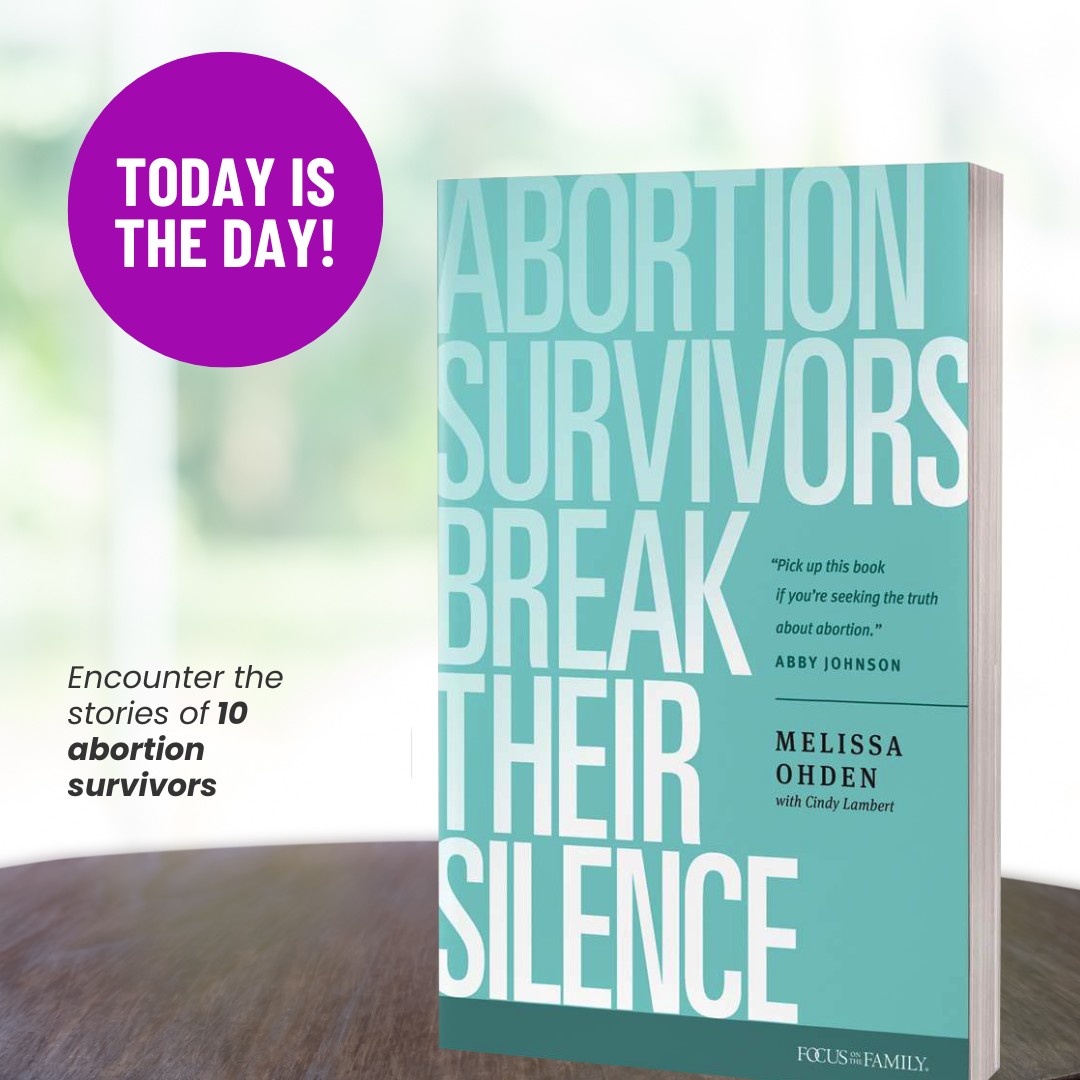Strategy
Expose people to what happens during an abortion procedure and it’s related data, to help people wake up to the truth beyond the rhetoric of abortion.
Tactics
These are the actionable points that you can use to spread truthful information about the abortion pills.

Describe Procedures
Be equipped to describe how abortions are performed at different gestational ages of pregnancy to help people reject the barbaric nature of abortion.

Provide Abortion Data
Share data on the number of lives killed by abortion, so people see the enormity of the issue and how it specifically affects various demographics.

Discuss Medical Emergencies
Talk about the number and types of medical emergencies that occur at abortion clinics, so people see they are not safe.

Share Late-Term Abortion Information
Bear witness to the reality of late-term abortions by putting a face to the procedure with the faces of survivors, and tell the stories of those survivors.

Explain the Truth About Exceptions
Explain how abortion proponents justify abortion using the “Exceptions Clause” while these exceptions only account for 7% of all abortions annually.
About Abortions
While proponents of abortion firmly believe women should have the right to procure an abortion, rarely do they feature their product in their promotion of women’s rights. Typically, when selling or promoting a product or service, companies focus on the features and benefits, but abortion advocates strenuously try to hide and disguise what they promote, and they never describe what they defend.
Why is that? Is it because their product is abhorrent and deadly? That is why we, who want to end abortion and protect the unborn, must change the debate even if it makes us uncomfortable. While they consider abortion to be health care, we need to help people see abortion for what it is, a money making, profit focus industry that exploits women in their most vulnerable state.
When you get into conversations that feature details about abortion, such as procedures, the number of babies aborted, the medical emergencies, late-term abortions or the misleading nature of exceptions – it will make people squirm. Respectfully, you may need to acknowledge that the information you are revealing is disgusting and awkward to share, but this is what is actually happening to precious little human beings, made in God’s image. If they don’t like hearing about it, imagine how the baby, no matter how small, feels being pulled apart.
For too long, we have let the pro-abortion crowd dictate the debate, but it is time to call out their euphemisms, propaganda and misinformation. Abortion is the intentional destruction of a vulnerable human baby, developing in its mother’s womb.

Tactic #1: Describe Procedures
Two of the hardest things about abortion is looking at photos of abortion victims (the dead baby) and explaining the various types of abortion procedures in layman’s terms. Why? Because it is gut-wrenching and controversial to discuss in polite company how barbaric and horrendous it is to see what we do to our most vulnerable members of society.
Today, in America, 2,548 unborn children will be killed by abortion because it is acceptable and legal to do so. It is time to turn people’s attention away from the legality of abortion and towards the reality of what actually happens during an abortion procedure. Being able to understand and explain how abortions are performed at the different gestational stages of a pregnancy will help people realize the barbaric nature of the procedures they support and accept as a woman’s choice.
We encourage you to become fluent in the various types of abortions and discuss them in detail or use your smartphone to show a video featuring a doctor describing a procedure. A simple way to introduce this topic in an abortion related conversation is to ask, “When you say ‘abortion’ – what do you mean? What do you think happens during an abortion? Have you ever considered it or researched the actual procedures? I’d love to share with you what I have learned recently about abortion procedures.”
To the right, you will find a variety of descriptions of the various procedures based on the age of the baby being aborted as per Human Life Alliance. We also encourage you to do your own research to discover the descriptions of procedures. Consider medical textbooks on abortion, like Abortion Practice by Dr. Warren Hern. On p.154 it describes a procedure, “A long curved Mayo scissors may be necessary to decapitate and dismember the fetus…” You may also find it helpful to visit the sworn court testimony in which practicing abortionists describe the procedure.
Additional Resources/Links
- Former Abortionist Describes Abortion Procedures in New Website – Lozier Institute Article
- Videos of Different Abortion Procedures
- Different Abortion Procedures – Students for Life
- I Saw a Baby Violently Stabbed to Death – Life News Article
- Body Drained and Dismembered – Live Action Article
Doctors explaining Abortion is not healthcare:
- https://www.lifenews.com/2024/01/05/national-medical-association-confirms-abortion-is-not-health-care/
- https://www.lifenews.com/2024/01/05/doctor-confirms-legalizing-abortion-doesnt-stop-women-from-dying-from-it
Abortion Pill (1st Trimester)
The first set of pills prevent the baby from getting oxygen and nutrients, causing the baby to die. The second set of pills expel the baby, usually into the mother’s toilet at home.
Dilation & Curettage (D&C) (1st Trimester)
After the baby is suctioned out of the uterus with a vacuum, the abortionist inserts a curette – a loop shaped, steel knife – into the uterus and uses it to cut the placenta and umbilical cord and scape them into a basin. The uterus is suctioned again to make sure no body parts have been left behind.
Vacuum/Suction Aspiration (1st Trimester)
The uterus is emptied by a vacuum or syringe, the baby is torn into pieces as he or she is pulled through a hose.
Dilation & Evacuation (D&E) (2nd Trimester)
The abortionist tears the baby’s body apart with forceps. The spine is snapped, the skull is crushed, and the remains are sucked out.
Induction or Prostaglandin (2nd Trimester)
Labor is induced in the 2nd or 3rd trimester. Saline or urea are injected to kill the child in the womb. Digoxin or potassium chloride are directly inserted into the baby’s heart to guarantee the child’s death. Other times the baby is delivered alive and left to die.
Nearly 30%
of pregnancies in the USA are unintended and 40% of these are terminated by abortion, there are between 1,500 to 2,500 abortions per day.
More than 63.4 mil.
unborn babies have been lost to abortion in the US since 1973. (That is roughly the combined population of 28 States and U.S. Territories.)
Nearly 20%
of all pregnancies in the USA (excluding miscarriages) end in abortion.
Tactic #2: Provide Abortion Data
The number of lives ended by abortion grows daily nationally and worldwide. Sharing this data helps put perspective on the enormity of the issue and how it specifically affects various demographics. Sadly, it is impossible to report 100% accurate data because the numbers collected by the CDC annually, excludes 4 states including California, Maryland, and New Jersey, but includes figures from New York City and the District of Columbia. On the other hand, statistics from the Alan Guttmacher Institute (AGI), which is the research arm of Planned Parenthood has been known to be inflated.
Currently, in the United States, the Alan Guttmacher Institute estimates in 2020, there were 930,160 abortions provided in clinical settings, an 8% increase from 2017. However, recognizing the lack of data the CDC does not have, they report 625,978 abortions in 2021, noting an increase of 5,651 abortions over 2020. Given the changes in laws, since Roe was overturned June 24, 2022, data for 2022 and 2023 will not be accurately reported for some time to come.
One of the most reliable sources for abortion data is the https://www.worldometers.info/abortions/ and the World Health Organization (WHO). Annual estimates for abortions annually are around 73 million induced abortions. This corresponds to approximately 200,000 abortions per day.
In addition to hundreds of thousands of unborn children dying by abortion, the report notes that six women died during abortion. “The CDC identified six abortion-related deaths for 2020, the most recent year for which data were reviewed for abortion-related deaths.”
Some additional highlights from the CDC’s most recent report for 2021 include:
- 0.2% of all reported abortions were performed on girls 15 and younger – approximately 1,251 abortions.
- 87% of abortions in 2021 were performed on unmarried women.
- In 2021, blacks accounted for 12.1% of the U.S. population, but black women accounted for 41.5% of all abortions. Non-Hispanic white people make up 58.9% of U.S. residents but had 30.2% of abortions.
- 53% of all abortions in 2021 were chemical abortion.
- 4 in 10 women will have an abortion by age 45.
- 6 in 10 women are mothers when they abort.
- 90% of children diagnosed with Down syndrome are aborted.
- 14,000 women/year place a child for adoption.
- 65% of women report pressure of coercion to abort.
Tactic #3: Discuss Medical Emergencies
While abortion proponents see abortion as healthcare, abortion clinics are rarely held to typical standards of care that other ambulatory facilities must meet. While it is rarely acknowledged in the main stream media, medical emergencies occur at abortion clinics more often than anyone realizes.
We need to shine a light on these emergencies when they occur to show the depth and breadth of them happening nationwide and to help people see abortion clinics are not safe for women. Consider that from 2017 through May of 2022, there were 434 documented emergencies requiring an ambulance transport to a hospital.
Operation Rescue, is an organization that exists to track the emergencies and collect data on the actual outcome of each incident when an ambulance is involved. They produce an annual report that provides data on abortion clinics in each state. Their website provides daily coverage of medical emergencies, which are often reported by sidewalk counselors at clinics. There is a section that features abortion doctors facing malpractice lawsuits and AbortionDocs.org allows you to do a deep dive into the history of most abortion clinics in America to see a record of their pass and fail inspections if the state requires them.
Anne Reed from Operation Rescue was recently featured on an AFL Zoom for Life call and you can watch her video discussion about their work here.


Tactic #4: Share Late-Term Abortion Information
Abortion can occur legally all 9 months of pregnancy, while the majority of states that allow abortion set the limit at 24 weeks, there are 7 states where you can get an abortion up until the day the baby is born. There are two key points to consider with late-term abortions, which is defined as abortions after 21 weeks gestation.
First, abortion proponents downplay the truth about these procedures happening because they know they don’t have public support. They say they only occur when the woman or baby’s health is in danger. But abortionist Warren Hern admitted that at least half of the late-term abortions he’s performed over the past half-century were elective, meaning that there was no underlying medical condition in the baby or the mother.
John McCormack of National Review, put the data on late-term abortions in context: “NBC’’s Dasha Burns challenged DeSantis, pointing to the fact that 1.3 percent of abortions happen at 21 weeks or later, but 1.3 percent of 930,000 total abortions still equals 12,000 unique human beings killed each year at 21 weeks or later, when babies can feel pain and sometimes capable of surviving outside of the womb. There are fewer than 12,000 total gun homicides in the United States each year. Burns, in an attempt to minimize the horror of late-term abortion, actually ended up agreeing that late-term abortions do in fact happen in the United States.”
Second, late-term abortions sometimes result in a baby born alive. Often, they are left to die, even though a federal law exists that requires babies born during an abortion to receive medial care. During the 2022 AFL Life SUMMIT events, we had 3 survivors of abortion share their testimonies during the different events to help people recognize a few children do survive an abortion and their presence makes it overtly clear what we lose in abortion.
Survivors bear witness to the reality that late-term abortions happen and put a face to what the abortion denies the world of – a precious, sacred human being.

Additional Resources/Links

AFL hosted victims of rape who conceived a child to share their testimonies during the Life SUMMIT 2023. We also featured Rebecca Kiessling, who was conceived in rape. The existence of children who’s father raped their mother reminds us that how someone is conceived does not define their value.
Additional Resources/Links
- Book: Victims and Victors: Speaking Out About Their Pregnancies, Abortions, and Children Resulting from Sexual Assault
- Save the 1
- 30,000 Doctors Say Abortion is Never Medically Necessary to Save a Mothers Life
- BeNotAfraid.net – for adverse in utero diagnosis
Tactic #5: Explain the Truth About Exceptions
The justification for abortion is often predicated on the “Exceptions Clause,” the special circumstances such as a baby diagnosed with a fetal anomaly, or concern for the mother’s health, or a child is conceived through rape or incest. All of these are considered “exceptions” that justify legalized abortion, but they actually account for only 7% of the abortions performed annually. Here is the breakdown based on each category:
- 1% Rape/Incest victims
- 3% Fetal Anomaly
- 3% Health of the mother
- 93% Elective
What people don’t realize when they refer to ‘exceptions,’ is that the women in these situations aren’t seeking an abortion, often it is a wanted child that the family is excited to welcome.
For example, when a child is diagnosed in utero with Trisomy 18 or Down Syndrome, the doctor will recommend ‘termination’ because the baby’s health is incompatible with life – but the problem is prenatal testing is not 100% accurate. In fact, the New York Times did an analysis of the most common prenatal screening tests and found they had a false positive rate of 85 percent!
And if there is an actual problem with the baby, the more compassionate way to address an adverse diagnosis for the sake of the entire family is to offer pre-natal hospice care, that allows the parents, and family, to hold the baby after birth, baptizing him or her, and having tasteful photos taken, then allow death to occur naturally.
When it comes to the health of the mother, again we must recognize that in the majority of cases, the mother is excited to be pregnant. Abortion in these circumstances is extra difficult for the mother, as she feels guilty that her body is in essence rejecting her child. Women in these situations need OB-GYN’s who will work to save both patients.
Doctor and Kansas Rep. Roger W. Marshall wrote an op-ed published by Fox News saying there aren’t any reasons why a late-term abortion is necessary to protect a woman’s health. “Contrary to the pro-abortion movement, regardless of the mother’s underlying medical health, I never saw the scenario where we had to choose between a mom’s life and a baby.” Marshall is an obstetrician who has delivered more than 5,000 babies in Western Kansas over 25 years. He also served as an OB-GYN at a state mental health hospital and prison.
Finally, for rape victims who become pregnant from the assault, they report the recommended abortion re-traumatized them after the initial rape trauma. The book, Victims and Victors provides a great overview of their experiences and their preference to gain power over the rape by giving birth to the child and placing the baby with an adoptive family.


